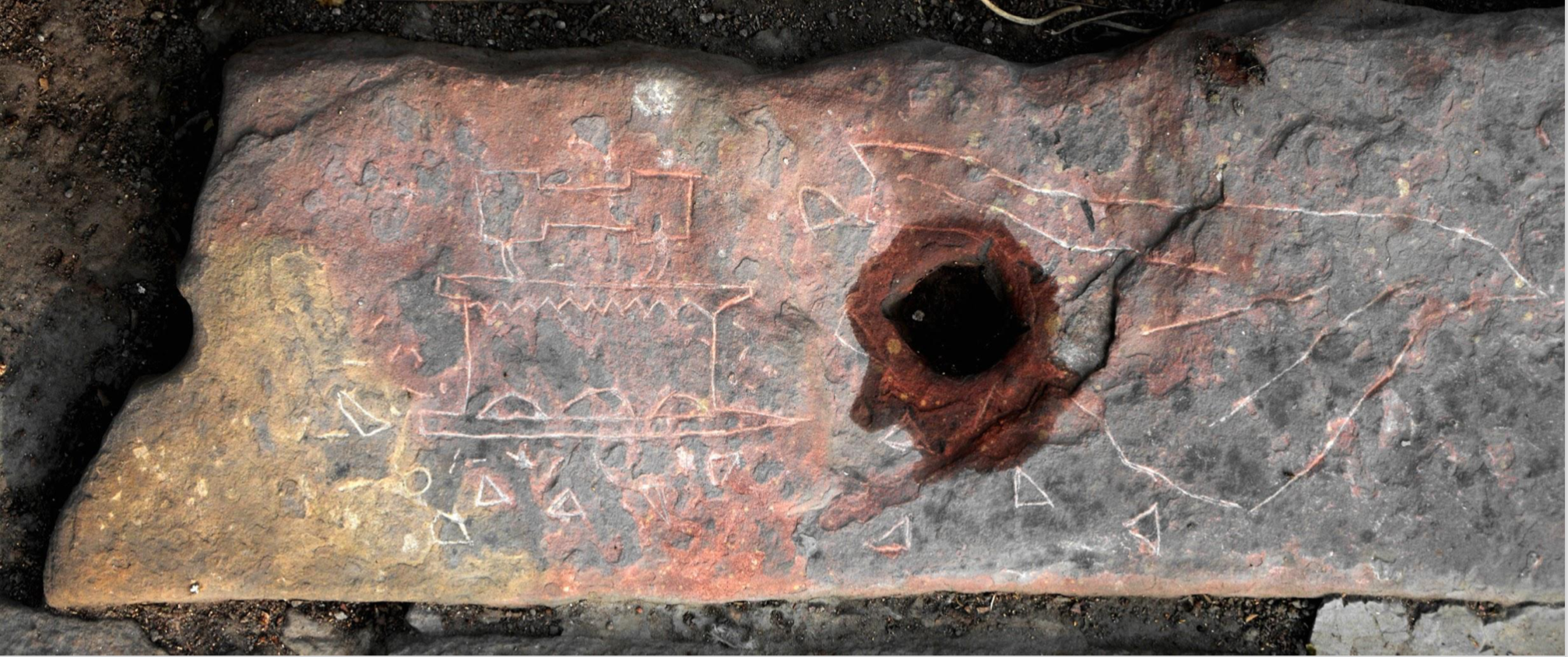‘In Search of Home: 1939 – 2021(Present) Part I – Gathering of Memories’ | New Delhi, India
New Dehli-based artist Vikrant Kano presents a long-term, multi-faceted, and deeply researched project that he has worked on since 2018. His intention is to seek an understanding of the idea of home through his family history and personal archive across three generations, dating back to the Partition of India¹.
Given the scope and expanse of Vikrant’s body of work, EAS is publishing excerpts in two parts. Part I: introduces the project and delves into gathering memories and Part II (to be published next week) is about the loss of memory in present times.
ARTIST STATEMENT
Long hours involved in distinct inquiry processes and practice in the studio during my master’s program engulfed me to an extent where a distance developed between myself and my home. This distance slowly morphed into a relationship of an altered association with my home and family members. This further led to an attempt at tracing my roots by examining the physical and psychological aspects of what we understand as “home”. Initial analysis enabled me to find new strands and helped me to trace the journey, from memories and oral histories of the family members to the event of Partition which caused multiple displacements.
Stitching strands together by delving into the alternate histories surrounding me, I discovered my family was no different than many other migrants living in Delhi. The displaced and forced-into-migration nature and physical structure of home is yet again being evoked with my father’s retirement, causing us to leave our present residence of over 70 years, a space which has seen the experiences of three generations.
I am interested in listening to, and recording the narratives of markets, local residents, the architecture of spaces—physical and in our mind— which inhabit the word ‘home.’ My work maps archives as a realm of art practice and is assisted by certain anthropological methods. I’m trying to tread the borders of its past, present and future while living through it. My practice grows close to the aspect of the private /personal narrative of a family processed through a conversation with ideas of displacement, relocation, erasure and migration. The intention of my body of work is to provoke thoughts on two main questions: What makes an existence of a home? and What does it mean to have a home?
FAMILY HISTORY
My works build from historical documentation of my familial history. The linking piece between the past and the present is my father who acts as a “bridge” between the two other generations of my family (my grandparents and myself). My grandfather was born in Brahma Rangoon, Burma. From Brahma Rangoon, he moved to Lahore where he was then employed in the British Army.
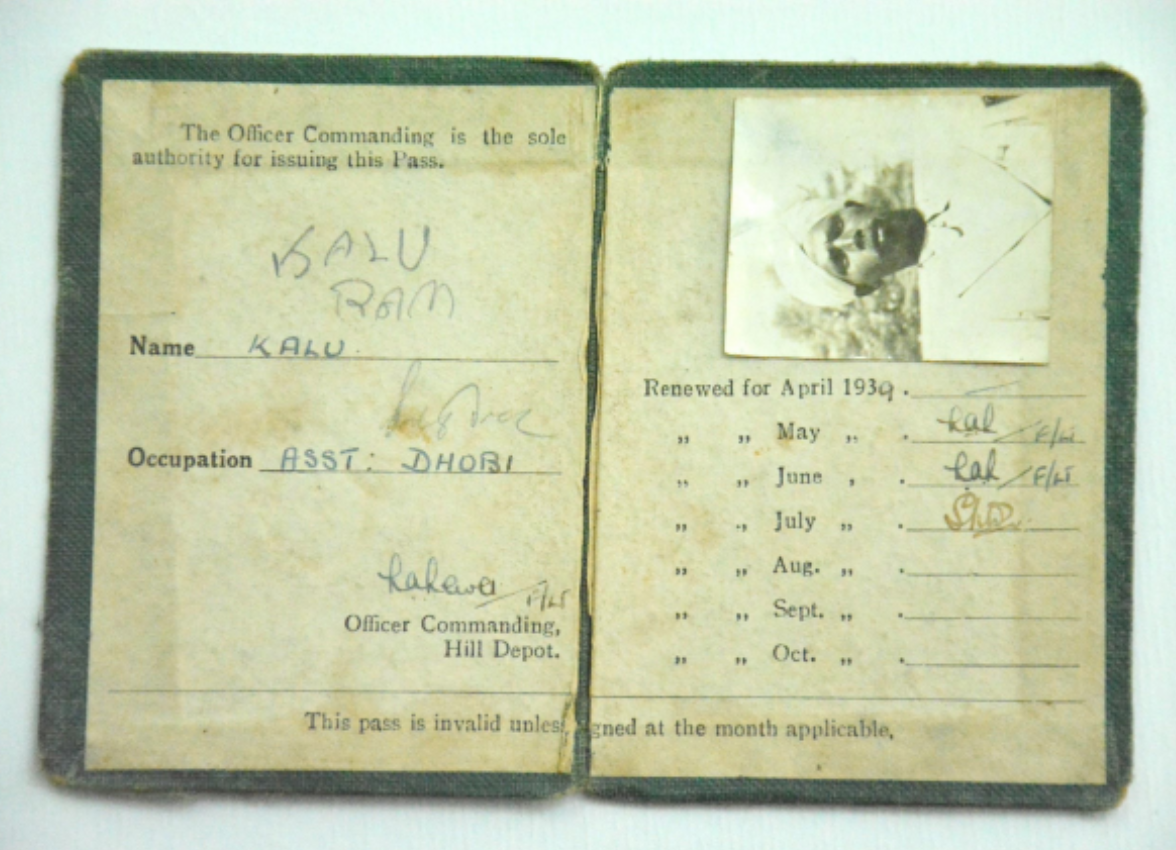
Before Partition
My work follows my family’s path of relocation and displacement; an almost perpetual and physical state of being in transit. I follow an archival process, where I trace the footsteps of my paternal family through 'physical' objects. It is a process of attaching and linking a sentimental chain of memories to our present through these physical entitie to stress the ethereal and ephemeral qualities of the human experience and memory.

During Partition
The photographs that I have collected here are representative of violence, struggle, and necessity. India's partition resulted in mass migration which often turned violent. People were asked to leave their ancestral houses and migrate to another land overnight with complete uncertainty of their future experiencing a state of forced 'homelessness'. The photograph of padlocks holds the strong symbolism of home, uncertainty, and loss. When the riots of the Partition broke out, my uncle and his daughter caught a train going to Attari, a small village in India's Punjab. Pulled down from the train by a mob of violent insurrectionists, they were forced to hide among corpses before they finally made it to the Attari station and then, Delhi.
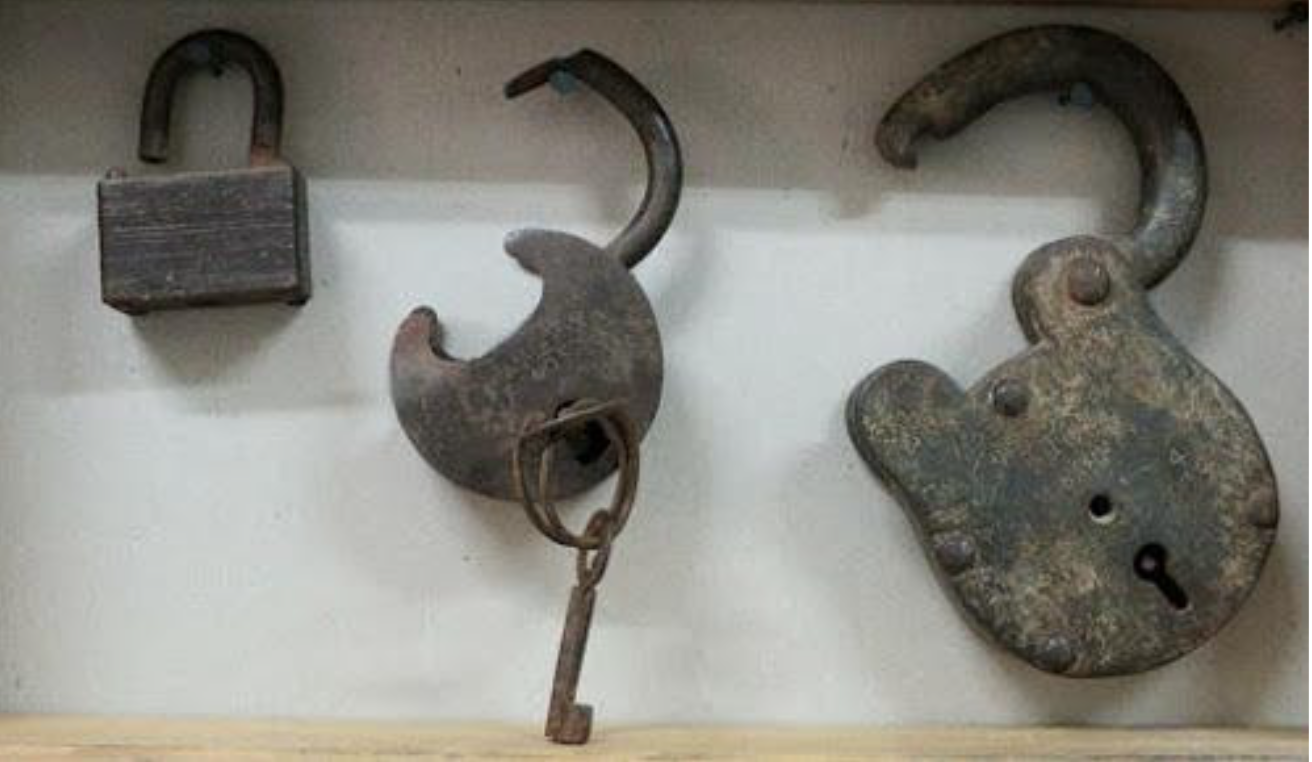
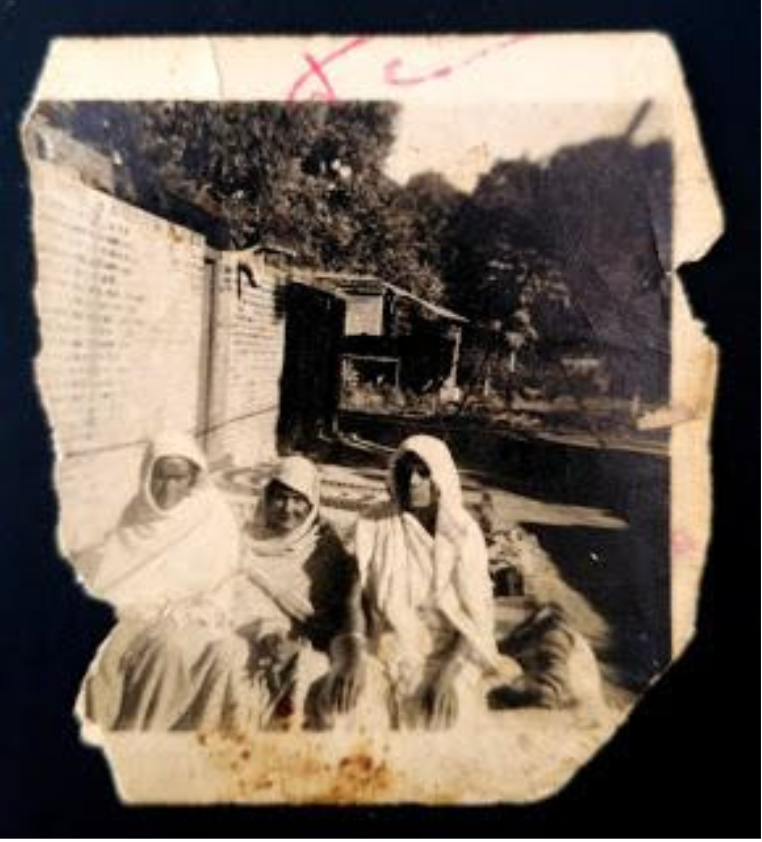
Post Partition at Bungalow no.4, State Entry Road
Bungalows on the State Entry Road near Connaught Place, New Delhi were built between 1924-1930. Post partition, the bungalow no. 4 was where my family found work and a 'home' and in the servant quarters. It has been 74 years that my family has been living here. After my father's retirement in 2021, we will have to leave the residence. The displaced and forced-into-migration nature of our societal structure is further reinstated by my father’s retirement. Through my journey, I also realized that my family is no different from other migrants living in Delhi or other parts of India. This led me to examine the physical and psychological aspects of what we understand as a “home”. My work represents an almost perpetual state of multiple displacements, and its foreseen becoming.
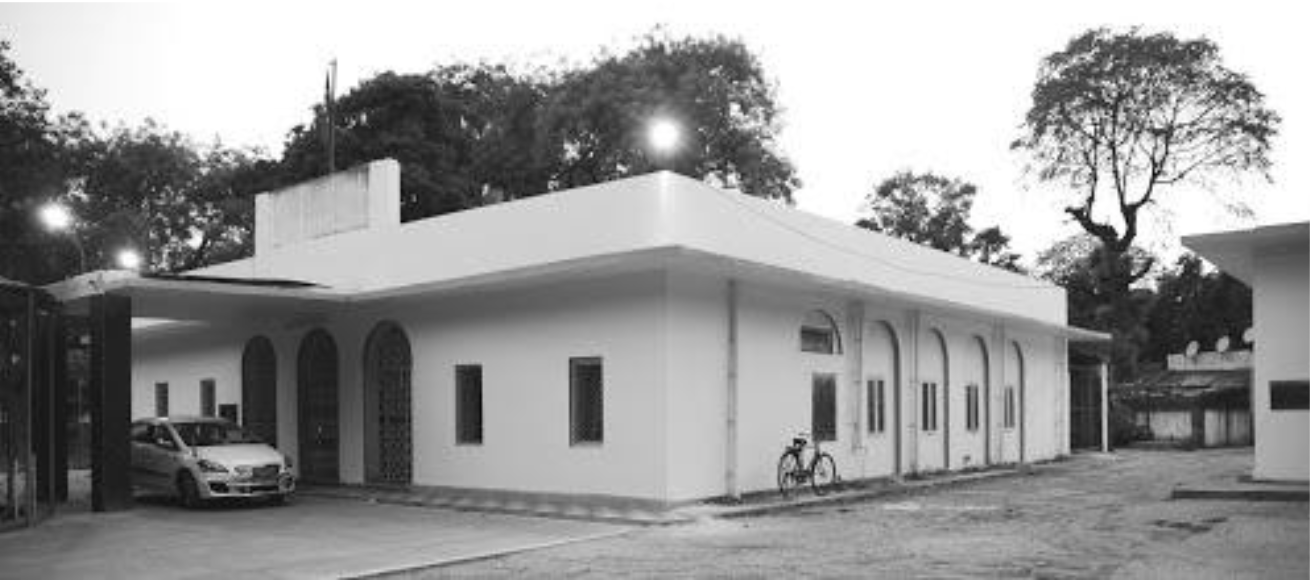
RESEARCH PROCESS & MEMORY SHARING
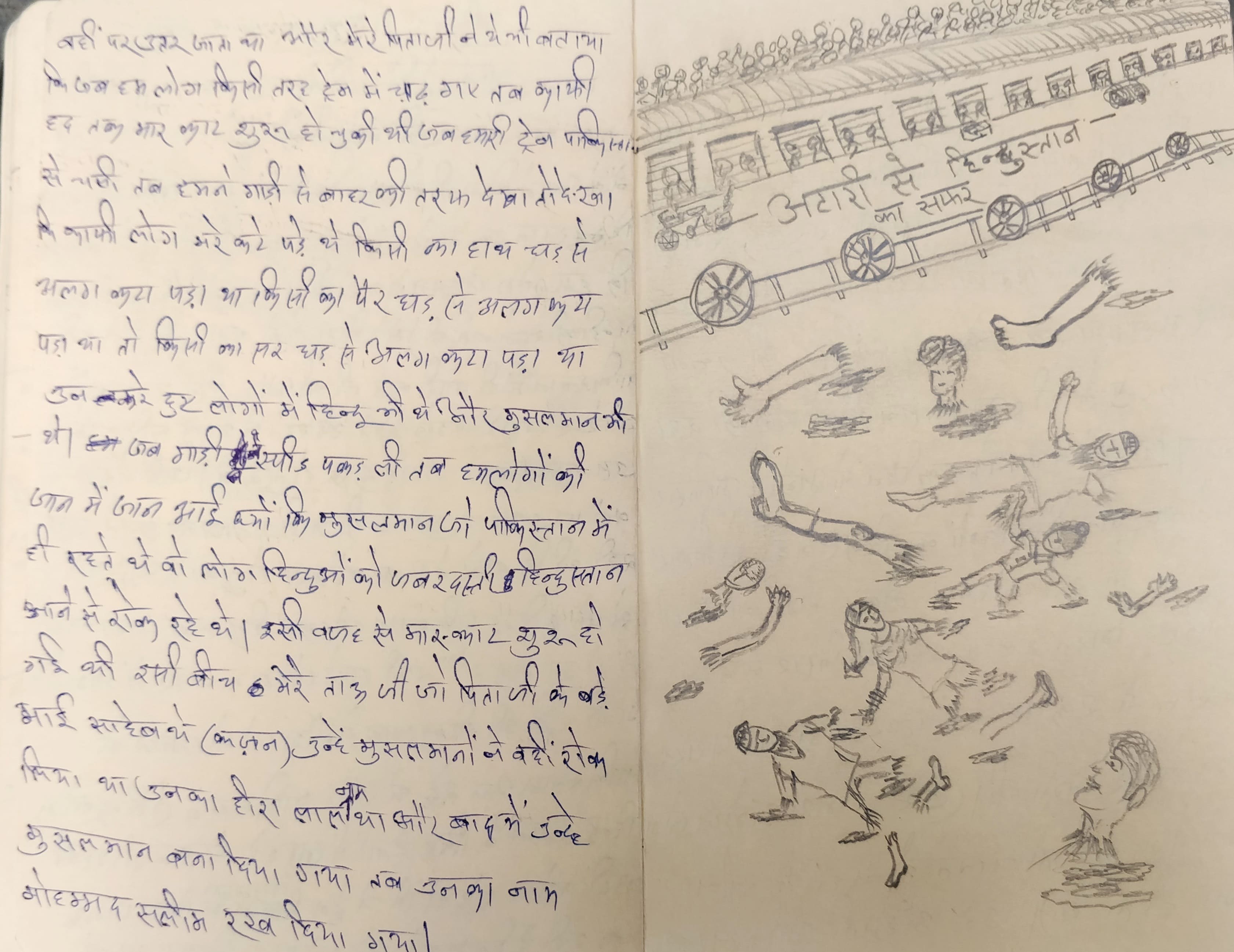
Developing conversations with my father through drawings and recordings became an exercise that aided me to create an archive by tapping into his journey and memory. This discipline of a sketchbook exercise helped me in excavating multiple memories from the histories surrounding these conversations. The material produced during this process include text and drawing-based imprints of oral historical accounts of his life. The collection of material in a diary-format shows a sense of progression through three parts (not necessarily chronological), where each part plays a significant role. This collection of information is an attempt to bridge the gap amongst the three generations—an attempt at building understandings and relationships anew.
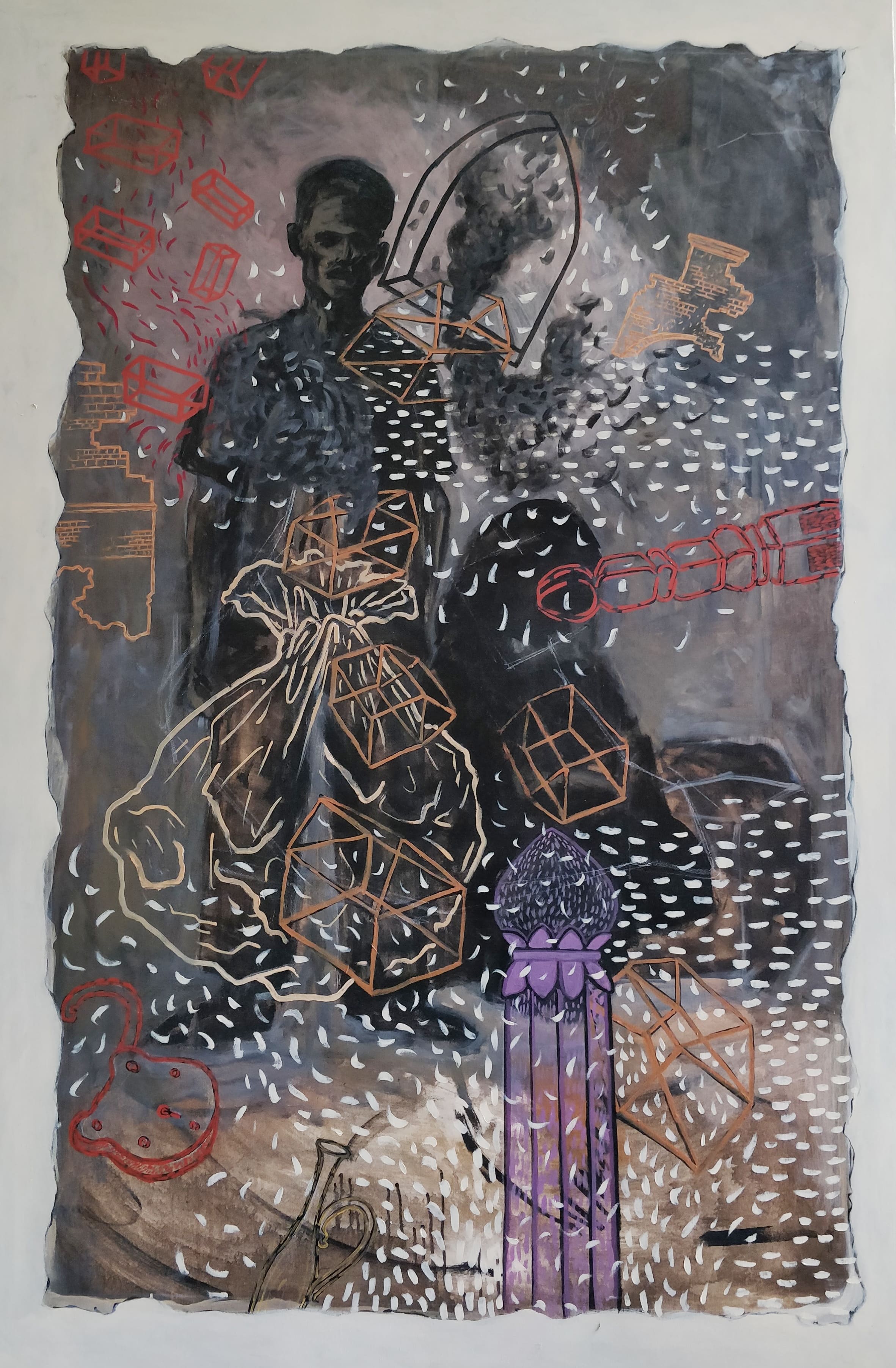
This work is a performative experiment which focuses on exploring the various dynamics of audio and its potential relationship with painting. By amalgamating both mediums, I tried exploring the idea of transcribing audio text into painting, in which audio is experienced through a visual form and then transformed on surface. The body and its external layers, as it exists in the past and the present, is being understood during the construction of a dialogue between me and my father, between the audio and the visual and finally translated to narrate a memory.
RE-THINKING: WHAT IS HOME?
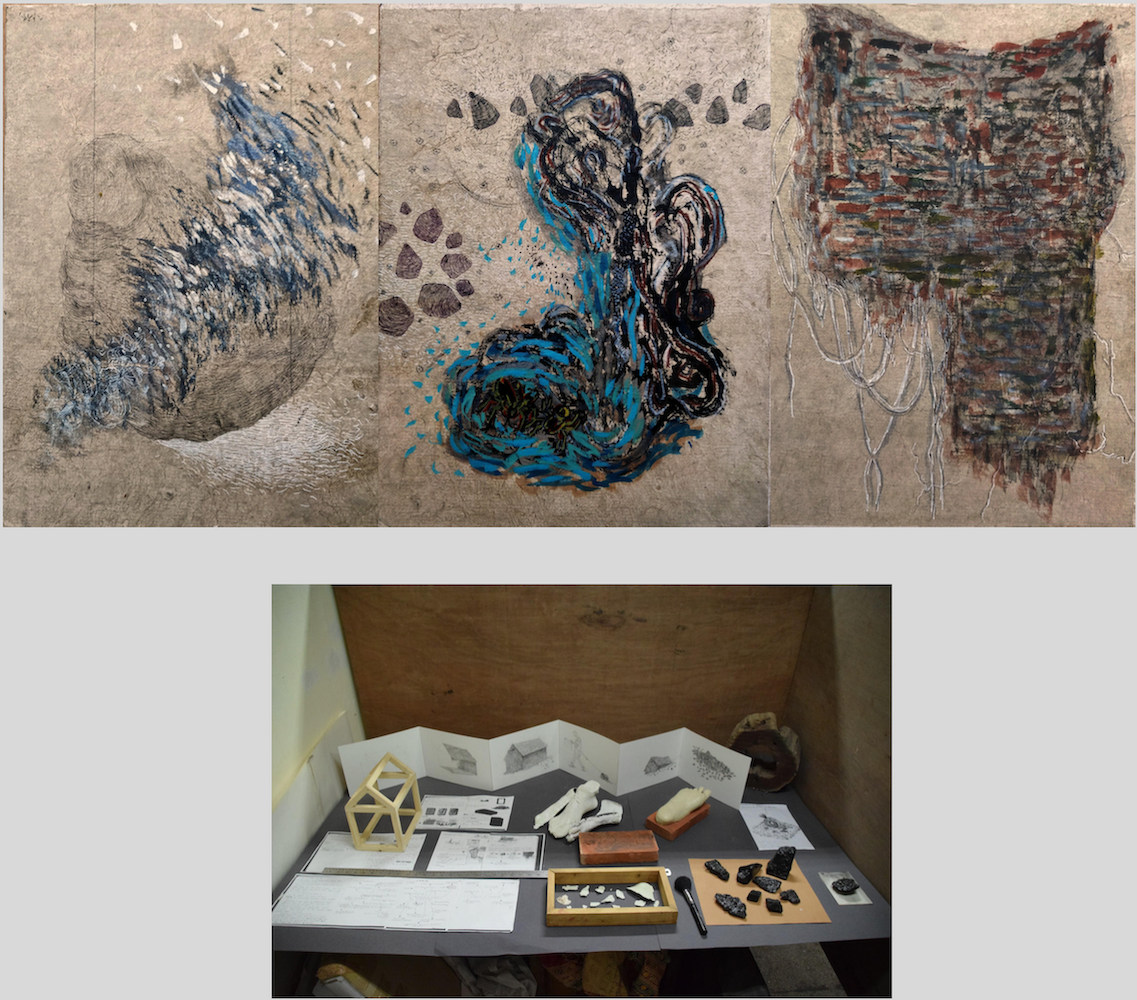
An experience is an encounter, the impressions of which are difficult to hold onto for a long time. Is there a possibility that this can be transformed into a physical form? Re-thinking and excavating ‘What is home?’ is an attempt to think, visualise and understand ‘home’ in today’s time by tracing the material and experience-based personal history of the home. It uses different approaches to trace the surroundings of this space, and the relationship of the structure with the three generations that inhabited it.
HOW WAS THE LIFE OF THE HOME?
The process of approaching this question has been broadly explored in three parts: information-based, excavation-based and experience-based. These segments explore the physical transformation of a structure, which is being referred to as a personal space called ‘Home’. On this note, these three works focus on exploring the journey of home by raising an inquiry about the life of this home. The inquiry takes shape in the form of these questions:
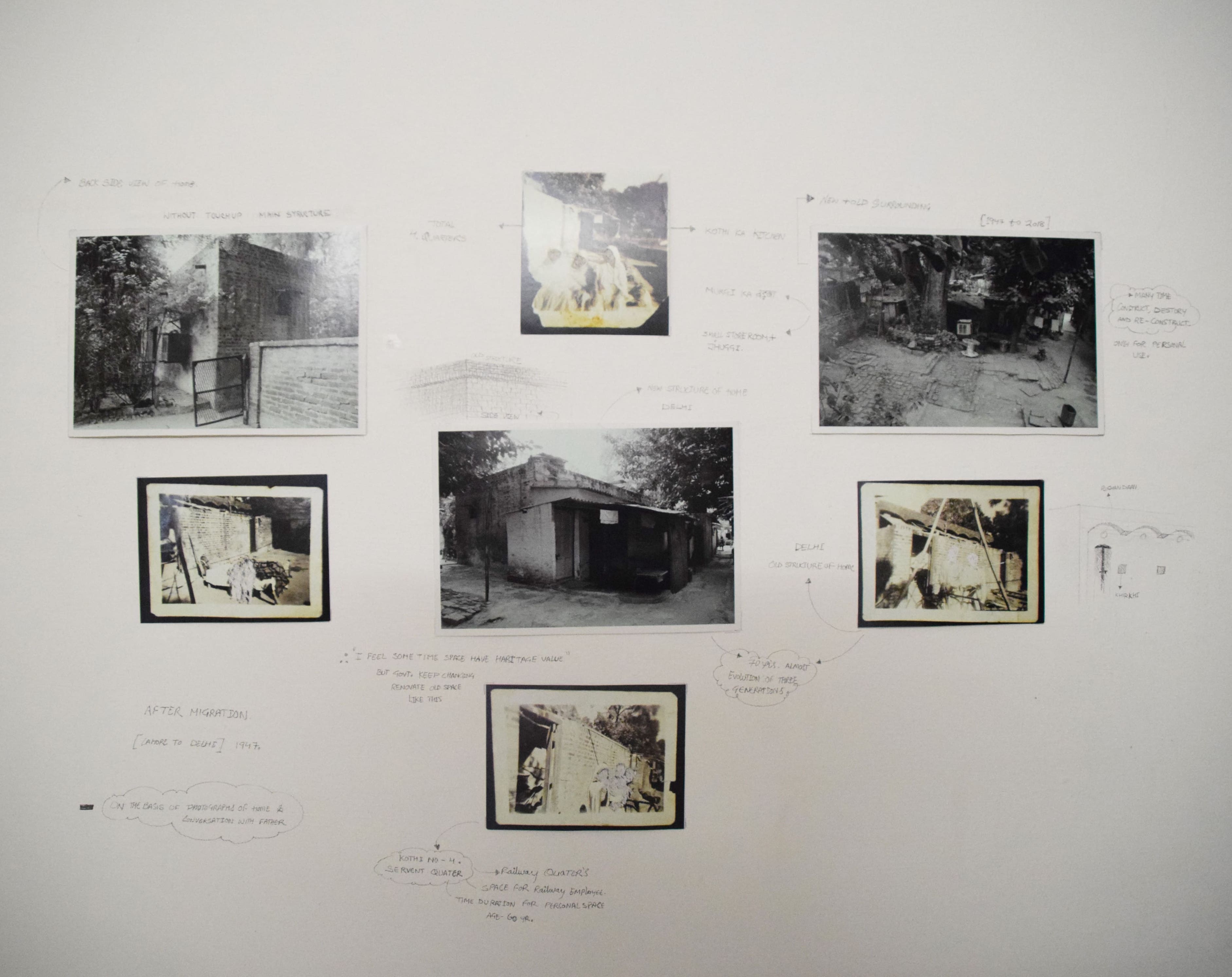 How were you and how are you now?
How were you and how are you now?
This work is an information-based documentation being developed through a nostalgic lens. This is done by overlapping three different mediums; photographs, conversation-based text and drawings. It includes four photographs of our house from 1950 and three black & white photographs from 2018. A conversation with my father about these photographs helped me comprehend the local and migration-centred vocabulary as depicted in the abstract narrative. This communication was later explored by drawing certain parts of the physical structure of home, which has transformed with time.
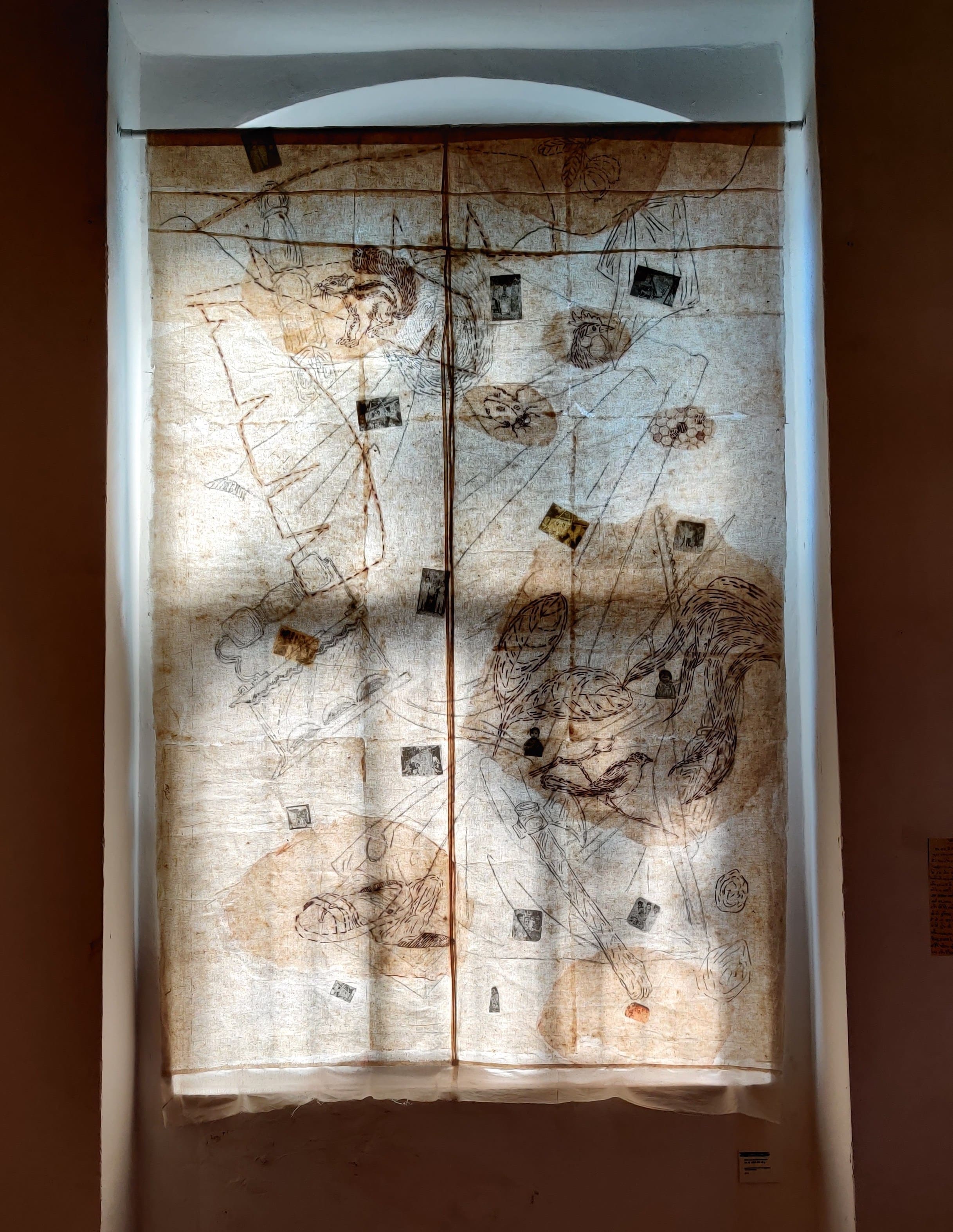
Who surrounds your home?
Geographical Mapping / Courtyard Movement (Natural and Forced)
In this work, change in nature through time and movement has been explored in the space of the courtyard. When we constantly encounter a space, how much are we actually able to ‘see’? To what extent can we change that space/place? This work started with an observation-based note-making process spanning one month. After that, this small notebook was further developed into this courtyard-based curtain work, rendered in mixed media.
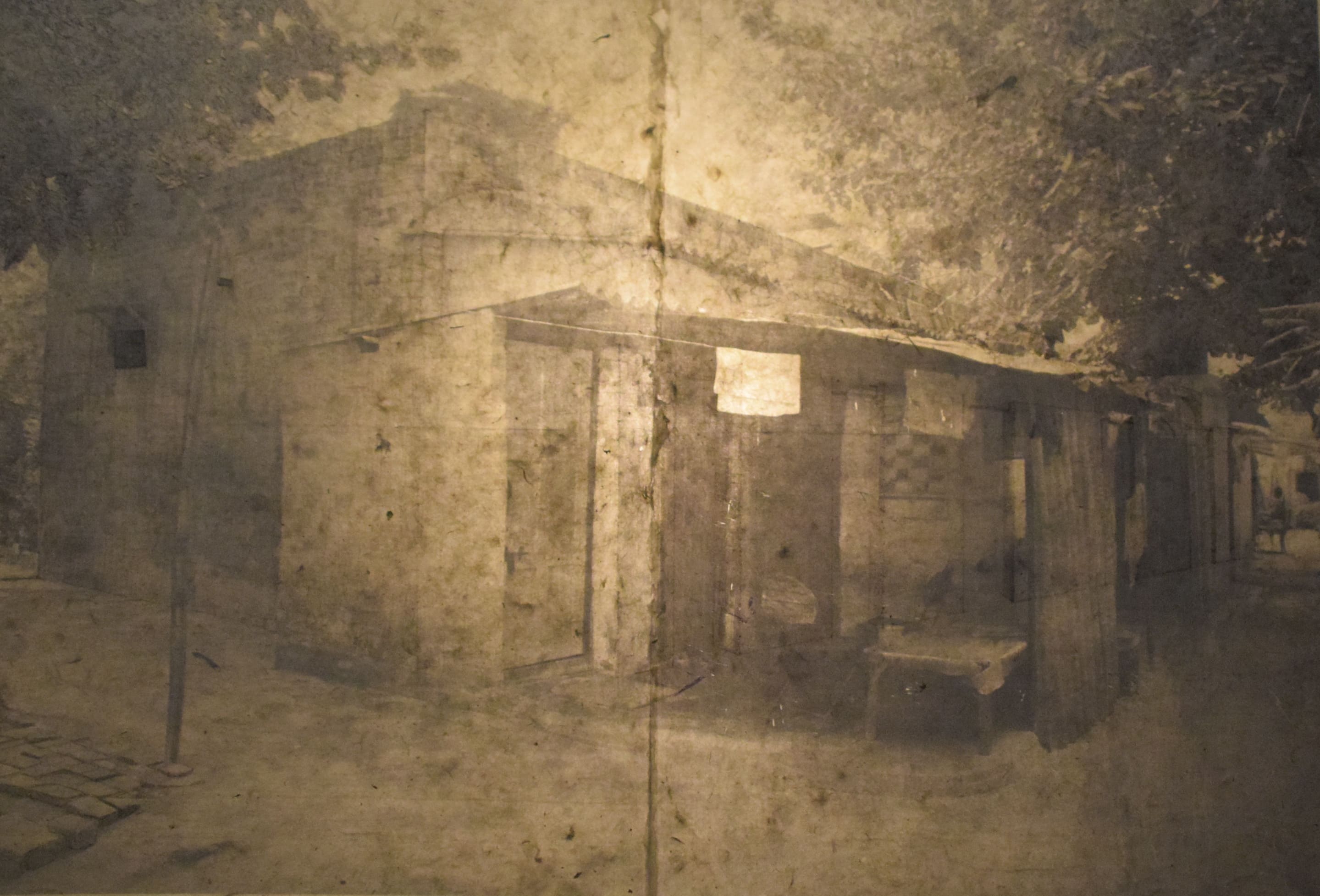
What was the journey of the home (1947 to now)?
The journey of this structure from a ‘house to a ‘home’ has been shown in this work through the past 70 years. Like a memory-provoking device, the artwork attempts to engage with any viewer. The work combines the changes that have taken place in the architecture alongside the connections it has with the generations of people living in it.
CONVERSATION WITH SURROUNDINGS
This is a site-specific work which has been displayed through video and photographic documentation in an exhibition space. The work has explored the relationship between my childhood experience of the space with that of my father's over the years. Reflections through conversations and the display act as the point of convergence. Engraving with nails on the brick exhibit the urge to communicate the significance of traces left behind in time and space.

CONVERSATIONS WITH MY FATHER
This work is based on a series of conversations between myself and my father, which I have tried to communicate through explorations in drawings. It depicts my father's recollections and experience of the courtyard of his house from when he was a child. After attempting to understand the house through his memories, I began looking at the same space through different materials; this led to the juxtaposition of my own understanding of the space with that of my father. This overlapping maps the evolution of the space as experienced by the two generations that inhabited it in the span of 70 years. The work also attempts to display a process undertaken to fill the gaps that otherwise are lost in translation.



LOST IN TRANSLATION
The visuals of the letters in any language reveal a secret code—as if forming a new ‘language’ altogether. My grandmother created such a code that was similar to the letters of the English, Hindi, Punjabi and Urdu alphabet, as well as Mathematics, and used this to keep a record of the clothes in the laundry from 1947 to 1998. Through an interview with a neighbour, the mark-making practice of my grandmother revealed itself through a new lens. The surprising aspect was that, in reality, she had no knowledge of these languages and her ‘language’ was one that nobody in the neighborhood or family could understand. This script seems to have been forming and simultaneously destroying the notion of language itself, as normatively understood. This body of work is a response to my grandmother's secret mark-marking language as well as an attempt at drawing parallel connections with the forms of my own art practice.
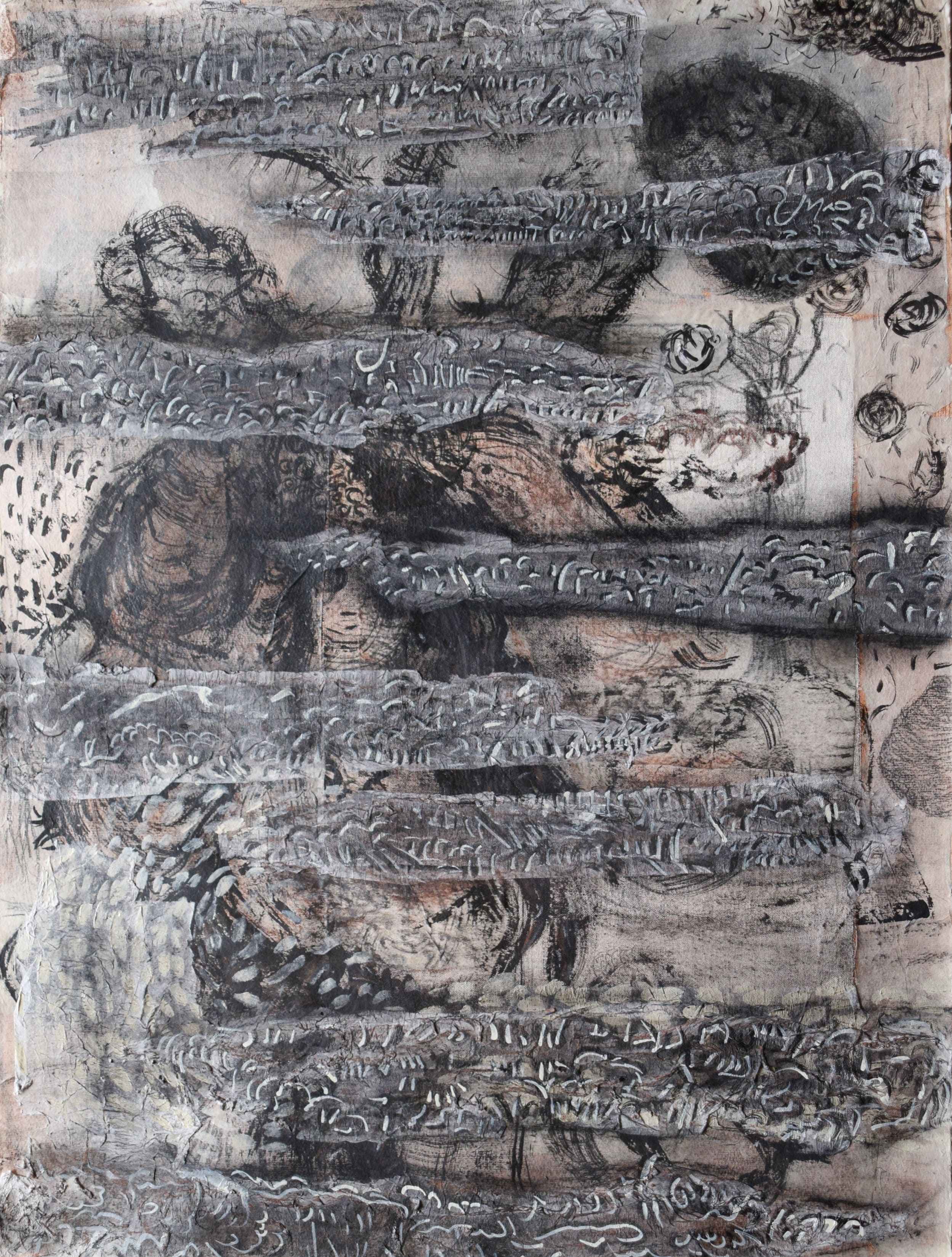
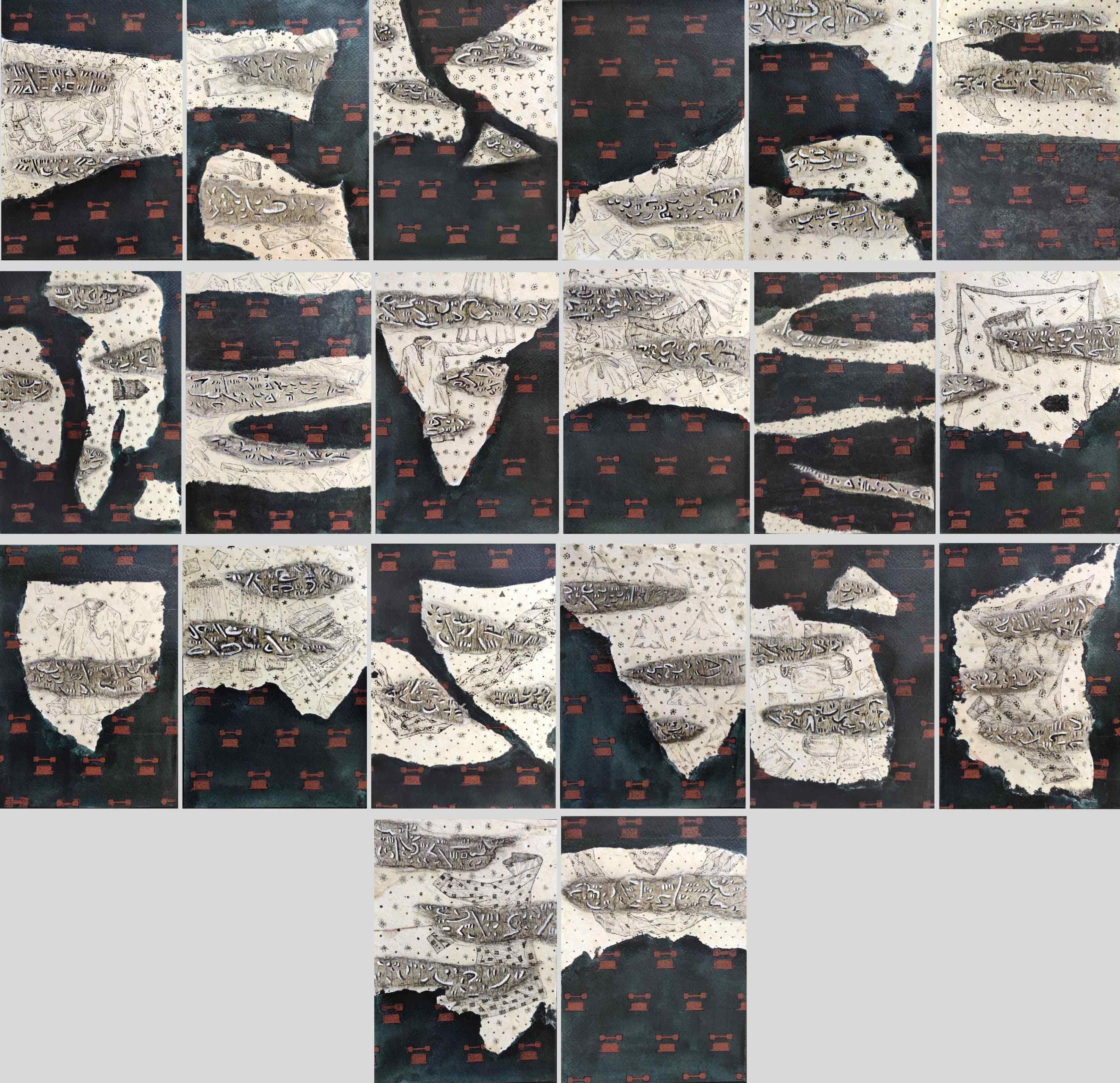
¹ In 1947, shortly after the independence from British rule, India separated into two independent countries: India and Pakistan. This separation involved in particular the states of Punjab (on the NorthWest of India) and Bengal (on the East), and saw the exodus of the Hindu population to India and of the Muslim population to Pakistan. Millions of people, threatened by this division along religious lines, were forced to move from their homes and lost everything.
ABOUT THE ARTIST
Vikrant Kano is an artist who is from Delhi. He completed his BFA (2016) and MFA (2018) from College of Art, New Delhi. Vikrant’s art practice centers around the ‘‘idea of home’’ through the investigation of his family history & archives. His exploration in mediums is varied, ranging from drawing, painting to photography, videography, etc. Vikrant’s practice explores erasure, migration, separation, human relationship with architecture and memory. He has participated in various exhibitions around the world that include: Call to Disorder: Experiments in Practice and Research, curated by vidya Shivadas at the Serendipity Arts Festival, Goa; Castelnuovo Fotografia /seventh edition held in the castle of Rocca Colonna in Porto, Rome; and Brief Parables of Dystopia at MOMus:Museum of Contemporary Art, Macedonian Museum of Contemporary Art and the State Museum of Contemporary Art Collections held in Thessaloniki, Greece 2019.
MORE FROM VIKRANT KANO: Part II - Loss of Memory in Present Time

